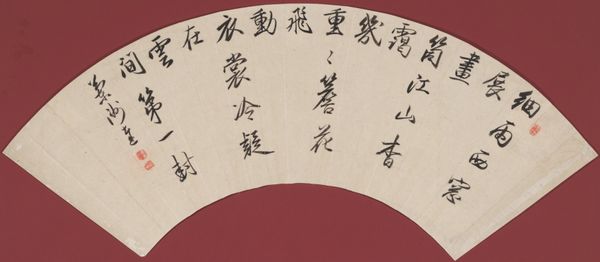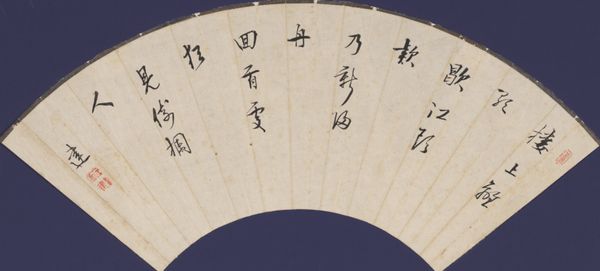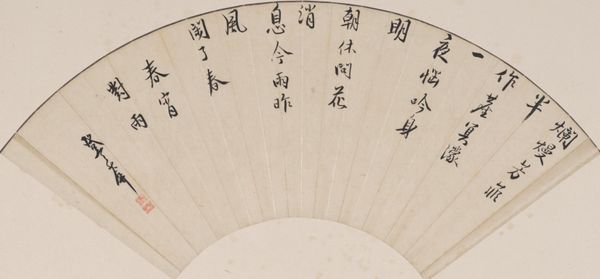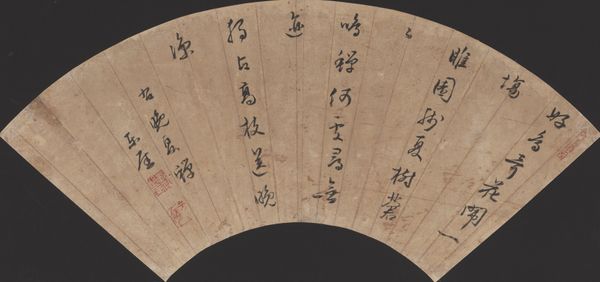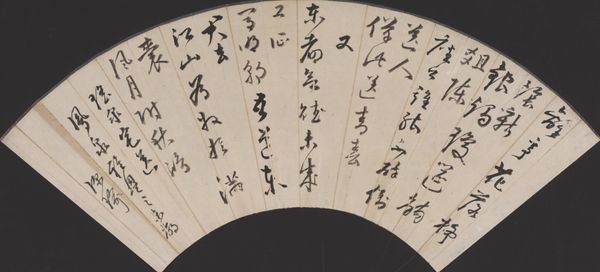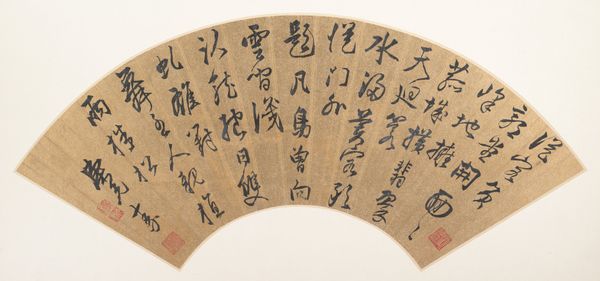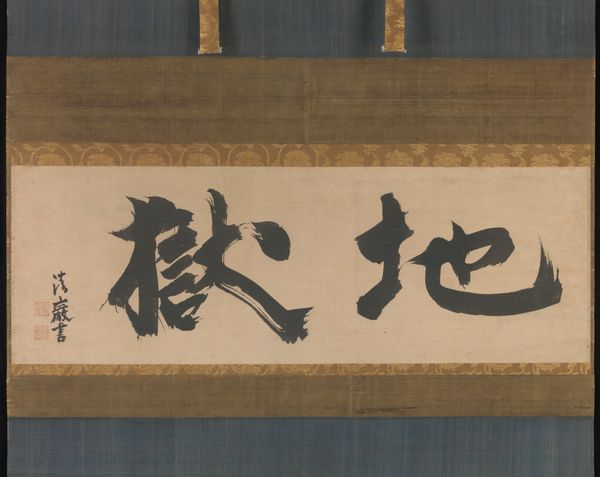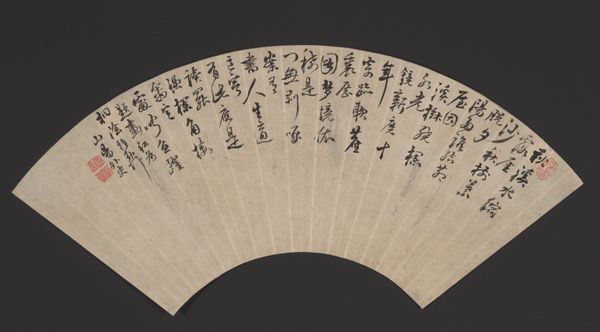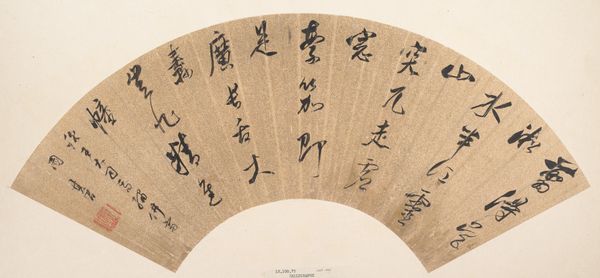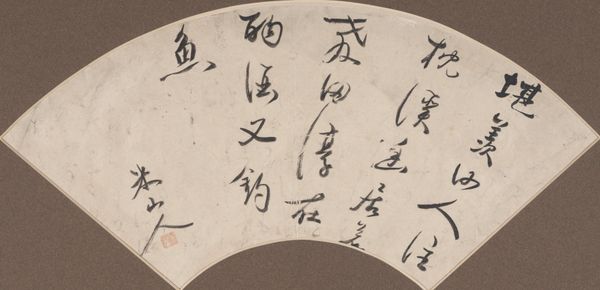
drawing, paper, ink
#
drawing
#
asian-art
#
paper
#
ink
#
calligraphy
Dimensions: 7 1/4 × 18 1/2 in. (18.42 × 46.99 cm) (sheet, fan)12 1/2 × 22 in. (31.75 × 55.88 cm) (mount)
Copyright: Public Domain
Curator: At the Minneapolis Institute of Art, we have a mid-19th century drawing titled "Poem" by Ema Saikō, rendered in ink on paper. Editor: It's deceptively simple, isn't it? At first glance, it looks like a series of elegant, abstract marks. I wonder, does its intended purpose as a poem enhance or obscure its understanding in a modern context? Curator: I see a conscious channeling of visual tradition, an attempt to link personal expression to larger cultural memory through calligraphic symbolism. The visuality of the text itself becomes part of the poem's meaning, carrying echoes of Confucian ideals. Editor: I can't help but consider the historical context of gender and artistic expression. As a female artist navigating a patriarchal society, were Saikō’s choices subversive, or were they operating within the expected parameters of artistic decorum? It makes me curious if the aesthetic of constraint actually emboldened a coded voice within the accepted visual lexicon. Curator: Interesting perspective. What if it’s both? A measured acceptance combined with a silent rebellion, made tangible via the visual echoes she summoned. Note the fluid quality of the strokes; observe how each character subtly interacts. Saikō's calligraphy breathes with dynamism. Editor: It speaks of lived experience, that's undeniable. I also keep considering that shape and how its semi-circular fan form lends a performative aspect to the work; how it might have been wielded, and to whom it may have been presented. Curator: The fan itself becomes a signifier. And her selection of a poetic subject, too, enhances its multi-layered communication, wouldn’t you say? Editor: Absolutely. Thinking about her biography—her role in scholarly circles—lends another critical layer. There is an intellectual dance at play here; an exploration that encourages active decoding rather than passive viewing. Curator: For me, this piece acts as a bridge to another time, providing an echo of Saikō's perspective across generations. Editor: Agreed. For me, "Poem" evokes questions about cultural translation, and how objects like this help us consider nuanced social landscapes and power dynamics.
Comments
No comments
Be the first to comment and join the conversation on the ultimate creative platform.
